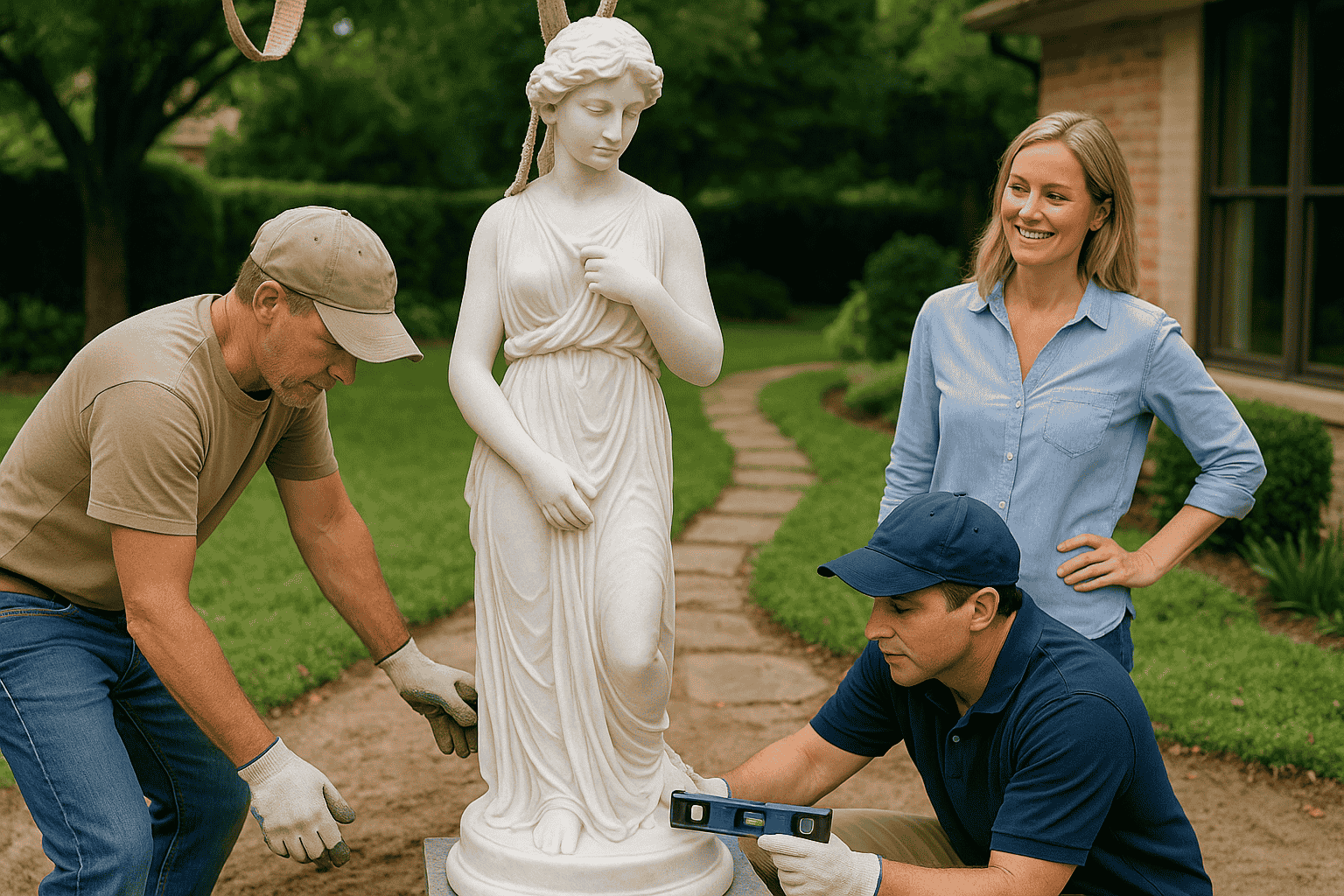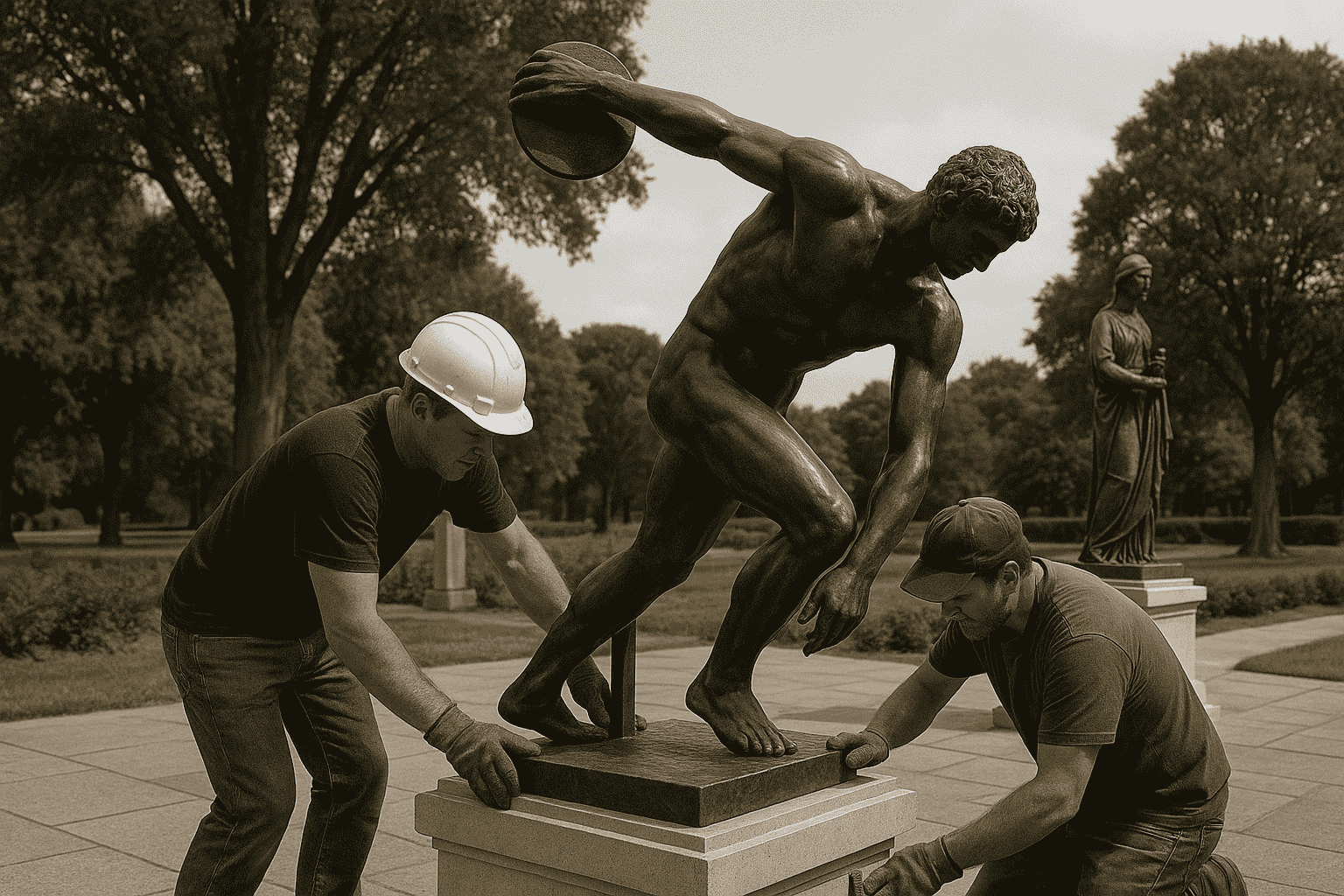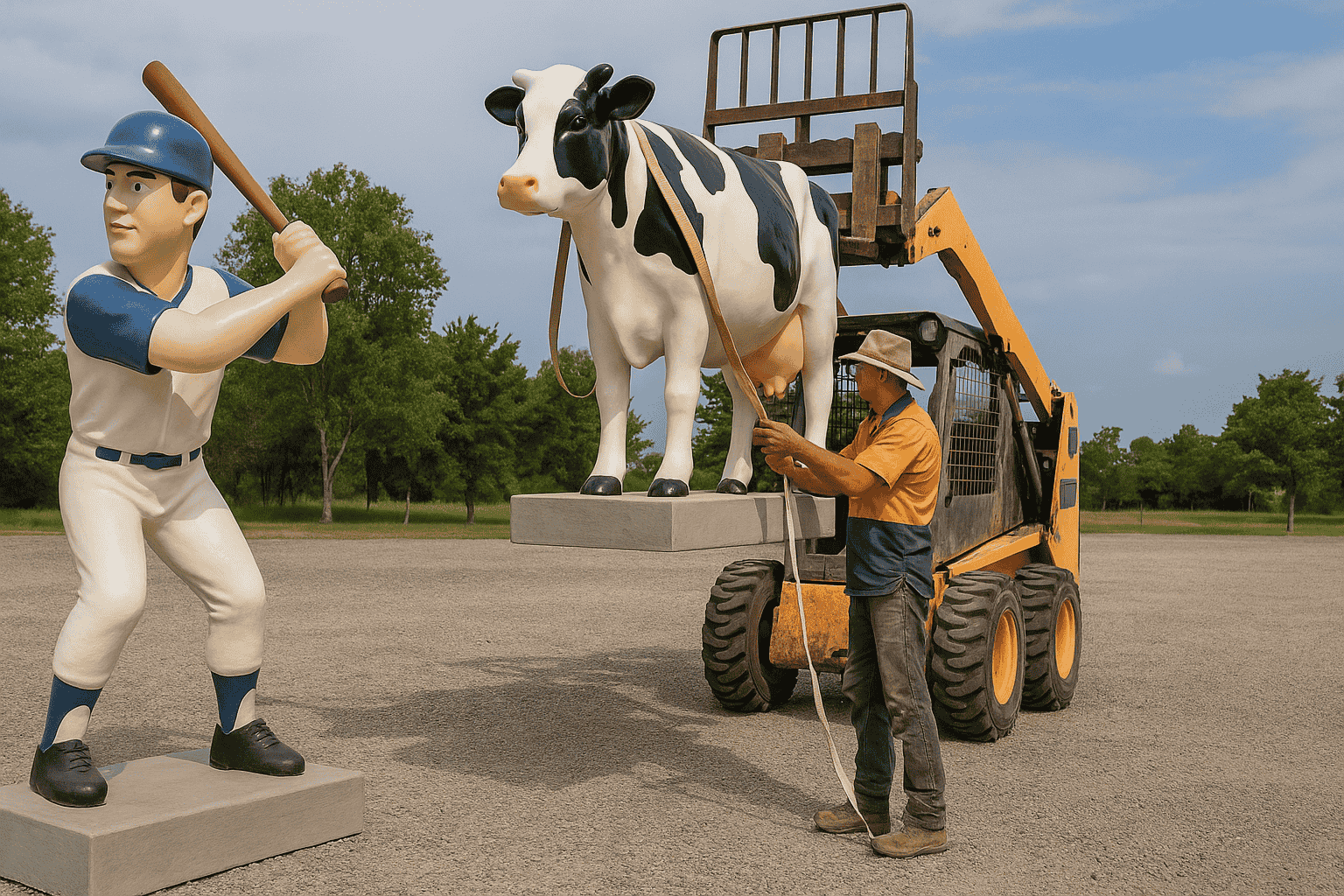How To Install a Custom Statue in the UK?

A custom statue does more than fill a space. It brings character. It tells a story. Place it in the garden or near the entrance, and it naturally becomes the centre of attention. People notice it. They ask about it. But you have to put it up the appropriate manner before you can enjoy it. It only takes a few easy steps and some care to accomplish it well.
What to Prepare Before Statue Installation?
Before you begin, take time to organise your tools and plan your setup. A well-prepared workspace reduces risks during unboxing and movement. It also makes the whole process faster and more secure.
Tools You’ll Need
- Safety gloves to protect both your hands and the statue’s surface
- Hammer and pry bar to open the crate carefully
- Pliers for removing staples or nails
- A soft cloth to wipe off dust or packing residue
Additional Equipment for Larger Pieces
- A hand truck is useful for mid-sized statues
- A hydraulic lift helps move heavy or tall pieces
- A forklift with padded forks provides secure lifting for marble or sandstone
Prepare the Area
Choose a clean, level surface as close as possible to where the statue will be placed. This limits unnecessary movement and reduces the chance of damage. Make sure there’s enough space to move around comfortably, whether you’re working alone or with equipment.
Consider the Manpower
Statue weights vary widely depending on the material and size. Some can be moved by two people, while others require several helpers or mechanical support. Check the weight and dimensions before unboxing so you can plan your lift method and team accordingly. Taking this step early helps prevent accidents and protects both the statue and those handling it.
How to Unpack the Statue Safely

This is the first real interaction with the statue, so handle it with care and attention. The way you open the crate can affect what happens next.
1. Set the Crate on a Solid Surface
Choose a flat, stable area that won’t shift or wobble while you work. Avoid soft ground, gravel, or uneven flooring.
2. Open the Crate Carefully
Use a hammer and pry bar to remove the top nails or staples first. Take off the top panel, then slide away the sides slowly and gently. Never force them open, as sudden pressure could damage the statue.
3. Lift the Statue Correctly
Lift the statue upright from its base. Do not tilt or drag it from the foam or packaging. Always use safety gloves to improve your grip and prevent marks on the surface. Be especially careful around detailed or delicate areas like fingers, corners, or edges.
4. Inspect Before Placing
Look at the statue from all sides before installation. Check for small cracks, chips, or loose parts that may have appeared during transit. If you find anything concerning, pause the process and assess it fully before proceeding.
Never drag a statue across the floor. Materials like marble, sandstone, and fibreglass can crack even with slight movement. Instead, use a dolly, forklift with padding, or a hand truck for safe transport. If it’s a smaller piece, lifting from the base with two people works well.
Material-Based Statue Installation Guide
Each statue material needs a slightly different approach. Some are heavy but durable. Others are light but weather-sensitive. This guide outlines how to handle and install bronze, fibreglass, and marble or sandstone statues safely.
Bronze Statues

Installation Advice:
Set on firm, level ground. Suitable for both indoor and outdoor use. Bronze statues can rest directly on a concrete base, pedestal, or floor.
Handling Notes:
Statue weights can range from 15 to 750 pounds. Smaller ones can be lifted by hand. Larger ones should be moved with a forklift or hand truck.
Maintenance Tips:
Wipe regularly with a soft cloth. Apply a thin coat of wax every few months to protect the surface and preserve the finish.
Fibreglass Statues

Installation Advice:
Ideal for display in indoor rooms, entryways, or sheltered gardens. Avoid placing them in direct sunlight or constantly damp areas. A dry, even surface like tile, stone, or a platform works best.
Handling Notes:
They usually weigh between 8 and 350 pounds. Small pieces can be moved with a team of two or three. Larger ones may require lifting equipment.
Maintenance Tips:
Clean using mild soap and water. If displayed outside, apply a UV-protective coating to help prevent fading and surface cracks.
Marble and Sandstone Statues

Installation Advice:
Best placed on concrete slabs or stone bases. Avoid soft or uneven areas like soil or grass, which may shift or retain water.
Handling Notes:
These pieces are typically heavy, ranging from 33 to over 1400 pounds. Always use a hydraulic lift or forklift with padded forks. Do not tilt or drag during movement.
Maintenance Tips:
Clean gently using only a damp, soft cloth. Avoid chemical cleaners, especially anything acidic. If kept outside, apply a stone sealant once a year to protect against moisture, dirt, and algae.
Final Placement and Positioning
Once unboxed and moved into place, positioning the statue correctly makes all the difference. A stable base and a clean, level surface protect both the look and the structure.
Level the Surface
Check the surface using a spirit level. Any tilt could eventually cause leaning, which puts pressure on the statue and may lead to damage.
Choose the Right Base
Indoor: Stone, hardwood, or marble floors offer strong support.
Outdoor: Concrete pads, large pavers, or stone platforms are ideal.
Avoid placing the statue directly on soil or gravel, which may shift or retain moisture.
Add Protective Pads (For Indoor Use)
Place felt or rubber pads under the base. These prevent scratches on the floor and help the statue remain in position.
Protect From the Elements (Outdoors)
Make sure there’s no pooling water around the base. If needed, create a slightly raised surface for better drainage. Use partial shade for fibreglass or sandstone to avoid long-term exposure to sunlight.
Secure If Necessary
For tall, narrow, or heavy statues, especially outdoors, use anchor bolts or brackets to prevent tipping. This is especially helpful in areas with wind, pets, or foot traffic.
Conclusion
Installing a statue takes care and a bit of planning. From unboxing to final placement, each step matters. Do it right, and your statue will stand beautifully for years.
Key Takeaways: Installing a Custom Statue
- Place the crate on a stable, flat surface close to the intended location
- Use safety gloves, a pry bar, and hammer to open the crate gently
- Lift the statue upright from its base — avoid tilting or dragging
- Always inspect the statue for damage before positioning
- Use a hand truck, hydraulic lift, or forklift based on the statue’s weight and size
- Install on firm, level surfaces like stone or concrete to prevent shifting
- Avoid placing statues directly on grass, soil, or gravel
- Use felt or rubber pads indoors to protect flooring and help with stability
- Check balance and level before final placement
- Anchor tall or heavy statues if needed for extra safety outdoors
- Clean with soft cloths only and use protective sealants for outdoor exposure





